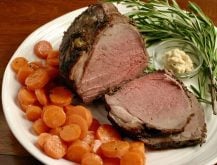Once again we have returned home after spending two months in Mesa, Arizona. While there, one of my favourite things to do is rest in the backyard on one of those comfortable Lafuma (zero gravity) patio chairs.
I lie in the sun and when it gets too hot, I move under the awning. The climate is perfect – and there are no mosquitoes or bugs.
With eyes closed, all the sounds can be heard. Occasionally, there is the swishing sound of a hummingbird hovering nearby or a dove cooing in the background. Our backyard is beside a golf course. As each foursome passes by, you can hear them chatting and having a good time. When a ball gets hit and goes astray, you hear some choice words. If it hits one of the trailers, the silence is for sure broken.
Read Also

Rural Manitoba resources slim on natural disaster planning
A study from Brandon University’s Rural Development Institute has found that many rural and small municipalities don’t have the staff or resources to make formal climate plans against natural disaster.
For some reason I like to hear what is going on around me – in the car, the house or outside.
When out for a walk, I don’t cover my ears with a music machine. I want to hear if a car, pedestrian, bicycle or dog is approaching. Also, the music would blur out all the wonderful sounds. Tonight, the squawking of geese flying filled the air. Also, there were the delightful sounds of children playing in yards and a puppy said hello with a bark through his fence.
It’s a good thing we aren’t all the same or the radio stations would have no listeners and the iPod makers no buyers.
Asparagus au gratin
I served this as a vegetable dish for a dinner. It would also be good as a luncheon dish, served with cold sliced meats and bread or toast.
1/2 pound fresh 250 g
asparagus
1 cup water 250 mL
2 tablespoons butter 25 mL
2 tablespoons flour 25 mL
salt and pepper, to taste
1 cup milk 250 mL
2 hard boiled eggs, sliced
1 cup grated cheddar 250 mL
cheese
1/4 cup bread crumbs 60 mL
Cut asparagus in one inch (2.5 cm) pieces and cook in water until tender. Drain well.
Melt butter and blend in flour, salt and pepper. Add milk slowly and cook until thick and smooth, stirring constantly.
Arrange asparagus, eggs, cheese and sauce in layers in a greased baking dish. Sprinkle crumbs over top.
Bake at 350 F (180 C) for 30 to 40 minutes. Serves four.
Source: Cooking Collections, by Federated Women’s Institutes of Canada, 1990.
Crescent chicken rolls
A friend in Arizona gave me this tasty recipe.
3 oz. cream cheese 85 g
1 tablespoon margarine 15 mL
or butter, softened
2 cups cubed, cooked 500 mL
chicken
1 tablespoon chopped 15 mL
chives or green onion
1/4 teaspoon salt 1 mL
1/8 teaspoon pepper 0.5 mL
2 tablespoons milk 25 mL
1 tablespoon chopped 15 mL
pimientos, optional
1 can (8 oz.) Pillsbury 250 g
Refrigerated Crescent
Dinner Rolls
1 tablespoon margarine 15 mL
or butter, melted
1 cup bread crumbs 250 mL
or crushed croutons
Preheat oven to 350 F (180 C).
Blend softened butter and cream cheese, beat until smooth. Add chicken, chives, salt, pepper, milk and pimientos. Mix well.
Separate dough into eight triangles as marked. Spoon in heaping
tablespoons of the chicken mixture and roll up. Brush with melted butter, then roll in bread crumbs.
Place on ungreased baking sheet. Bake 20 to 25 minutes or until
golden brown.
For fewer calories, I omitted the butter in the filling and at the end.
If the bread crumbs won’t stick to the dough, brush with milk or water.
Weight-loss fraud
A new report by the Federal Trade Commission in the United States, says that weight-loss products are the No. 1 type of consumer fraud in that country. About five million Americans fall for these scams each year, some of them buying more than one item. The products include dietary supplements, non-prescription drugs, skin patches, creams, wraps and even earrings that are supposed to suppress appetite. The marketers typically promise substantial, rapid, no-effort weight loss without dieting or exercise –
guaranteed. The only thing you’re guaranteed to lose is your money.
Action on plastic
Bisphenol A is a synthetic chemical compound found in some hard clear plastics and resins such as food and drink containers, compact discs, electronics and the liners in many metal cans.
Health Canada began reassessing bisphenol A in November 2007 after several animal studies around the world found the chemical was leaching from consumer products.
Health Canada’s study primarily focused on its impact on newborns and infants.
However, health risks for all ages were considered. It was determined that the main source of exposure of newborns and infants is through the use of polycarbonate baby bottles when they are exposed to high temperatures and the migration of bisphenol A from cans of infant formula.
Scientists concluded that bisphenol A exposure to newborns and infants is below levels that may pose a risk, but the gap between exposure and effect is not large enough.
As a result, the government is banning polycarbonate baby bottles and developing stringent migration targets for bisphenol A in infant formula cans. They will work with industry to develop alternative food packaging.
Scientists also found that at low levels, bisphenol A can harm fish and aquatic organisms over time. Studies indicate that it can be found in wastewater and sludge treatment plants.
The government will be working with the provinces and stakeholders to keep bisphenol A out of our environment, and take the necessary measures to ensure its safe use and disposal. For more information, call 866-891-4542.
Food myths
- Eating celery results in a net loss of calories.
That is not true. Eating celery won’t subtract inches from your waistline, but it won’t add any either. A large stalk of celery has six calories and small amounts of potassium, vitamin C, folate and fibre.
- Multigrain foods are always made with whole grains.
Just because the label states that an item is multigrain doesn’t mean that it is made from whole grains. Whole grains are those that have all the parts of the grain intact – the bran, germ and endosperm.
- You should drink eight glasses of water per day.
Staying hydrated is important, but the water you drink can come from other sources like milk, juice, coffee, tea and other drinks.
- Dried fruit is not as healthy as fresh fruit.
Canada’s Food Guide recommends at least seven servings of fruits and vegetables daily. It doesn’t matter if the fruit is fresh or dried.
It is still healthy.
- Coffee will stunt your growth.
Coffee cannot stunt your growth, but drinking it in lieu of calcium-rich dairy products could affect bone health.
- Frozen vegetables are less nutritious than fresh ones.
Frozen vegetables are generally picked at the peak of freshness and flash-frozen to retain their nutritional content.
Alma Copeland is a home economist from Elrose, Sask., and one of four columnists comprising Team Resources. Send correspondence in care of this newspaper, Box 2500, Saskatoon, Sask., S7K 2C4 or contact them at team@producer.com.














